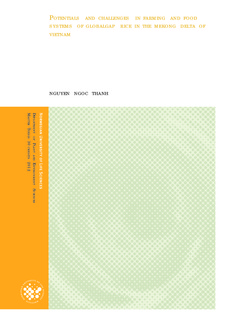Potentials and challenges in farming and food systems of Globalgap rice in the Mekong Delta of Vietnam
Master thesis
Permanent lenke
http://hdl.handle.net/11250/189502Utgivelsesdato
2012-09-18Metadata
Vis full innførselSamlinger
- Master's theses (IPM) [204]
Sammendrag
Vietnam contributes remarkably with its rice production to export to many countries on the world. Rice cultivation has been started since long time in Vietnam, and today being the second largest exporter in the world. Producers apply more and more fertilizer and pesticide on their rice fields to gain high yield besides of integrating advanced technologies such as sowing with low density, integrated pest management and pathogenous resistant rice. The rice production causes many problems of health and has negative impact to the environment. Today, small-scale production is confronted with many obstacles for improving rice quality. To analyse this, a case study was designed to explore Globalgap rice production for the Mekong Delta of Vietnam. The Globalgap production translates customers’ requirements into agricultural production practice to improve mainly food safety and quality on global markets. It is investigated how rice cultivation could be altered, but also what are the present habits of rice consumption as well as effects on the environment. Thanks to Checkland’s SSM, complex situations of rice farming and food systems were expressed in rich pictures and SWOT analysis where used to the complex systems. Research shows that the Globalgap rice production changes the past habits to rice sowing with lower density, applying less fertilizers and pesticides and improving quality rice production. Moreover, the producers became aware to better protect their health and the environment. However, the Globalgap rice could not meet diverse customers because its price is high compared with other popular rice.
